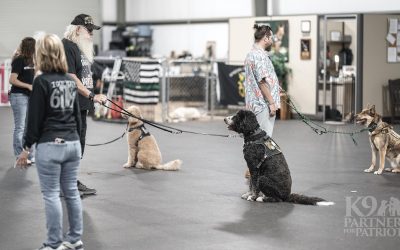Under the ADA, State and local governments, businesses, and nonprofit organizations that serve the public generally must allow service animals to accompany people with disabilities in all areas of the facility where the public is allowed to go. For example, in a hospital, it usually would be inappropriate to exclude a service animal from areas such as patient rooms, clinics, cafeterias, or examination rooms. However, it may be appropriate to exclude a service animal from operating rooms or burn units where the animal’s presence may compromise a sterile environment.
Quick Links About Service Dog Law
ADA Requirements: Service Animals
To comply with ADA law and ensure that your business doesn’t violate the rights of your clients with service dogs, here are 5 things you need to know.
- Service Dogs Are Working Dogs. Under the Americans with Disabilities Act (ADA), service animals are not required to wear a vest, ID tag, harness, or other identifiers. In situations where it is not readily apparent that an animal is a service animal, places of public accommodation covered under the ADA may ask these two questions of the animal’s handler: (1) Is the service animal required because of a disability? (2) What work or task has the animal been trained to perform? Staff are not allowed to request any documentation for the animal, require that the animal demonstrate its task, or inquire about the nature of the person’s disability.
- Customers with Service Dogs May NOT Be Segregated. People with disabilities who use service animals cannot be isolated from other patrons, treated less favorably than other patrons, or charged fees that are not charged to other patrons without animals. In addition, if a business requires a deposit or fee to be paid by patrons with pets, it must waive the charge for service animals.
- Service Dogs Perform Many Different Tasks. Many people struggle with invisible disabilities and benefit greatly from the assistance of a service dog. Some of these include post-traumatic stress disorder, traumatic brain injury, seizures, autism, and diabetes. By law, you cannot ask someone why they need a service dog but you can ask what tasks the dog is trained to perform.
- Service Dogs Must be Well-Behaved and Under Control. A service animal must be under the control of its handler. Under the ADA, service animals must be harnessed, leashed, or tethered, unless the individual’s disability prevents using these devices or these devices interfere with the service animal’s safe, effective performance of tasks. In that case, the individual must maintain control of the animal through voice, signal, or other effective controls.
- Service Dog Certification and/or Identification. There’s no such thing as an official national certification or national registry for service dogs. Covered entities may not require documentation, such as proof that the animal has been certified, trained, or licensed as a service animal, as a condition for entry.
There are individuals and organizations that sell service animal certification or registration documents online. These documents do not convey any rights under the ADA and the Department of Justice does not recognize them as proof that the dog is a service animal.




